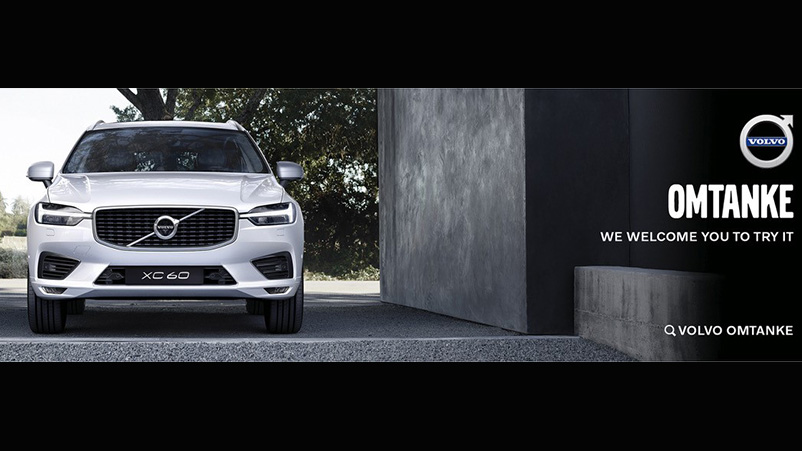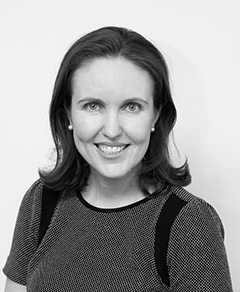Volvo flips to long-term brand building over digital performance metrics

When Volvo’s marketing boss Julie Hutchinson arrived two years ago from Lexus, “everything was conversion, tactical and price-pointed” in channels like Carsales, CarAdvice and Carsguide. But Volvo had a brand problem which she set about fixing. Along with Mindshare and whiteGREY, Volvo just won the Media Federation’s 2019 Grand Prix. Here’s how the automaker is transforming its short-term tactics and longer-term brand building.
“I love [Professor] Byron Sharp. When I arrived at Volvo, everything was conversion, everything was tactical and price points…lots of investment in Carsales, Carsguide and CarAdvice but really it was at the bottom of the funnel.”

Volvo's Julie Hutchinson
Volvo flips the funnel on performance media
Professor Byron Sharp will be chuffed. The marketing sciences guru at the Ehrenberg-Bass Institute has long shaped how consumer goods brands like Mars, Coca-Cola and Unilever go to market but autos like Volvo are moving in too on many of the “marketing laws” which Prof. Sharp and Ehrenberg-Bass have long espoused.
“I love Byron Sharp,” says Volvo’s Julie Hutchinson. “That was my playbook. When I arrived at Volvo, I could see straight away that looking at where the spend and the investment was placed, it was at the bottom of the funnel. It was about conversion. There was some brand activity but it was quite sporadic. It wasn’t consistently always on. It was the business strategy really: ‘We need to sell the units. We need to hit a target and we need to do it in a way that is very aggressive’. So there was lots of investment in Carsales, CarAdvice, Carsguide but really at that bottom end of the funnel. As I said, the brand was sporadic. I could see straight away that everything was conversion, everything was tactical, price pointed.”
But when Hutchinson dug into Volvo’s brand metrics and how people were relating or talking about Volvo, she saw quickly that while there was high awareness, brand perceptions, consideration and purchase intent dropped off sharply.
“Volvo is known for safety and I would be wrong to say that isn’t important to us. But for premium buyers, safety isn’t one of their top reasons for purchasing. It’s a luxury brand. For a lot of people, they would say Volvo is just not on their radar. They weren’t thinking about Volvo. They’re safe. They’re boxy. They’re reliable. But Volvo stands for a lot more than just safety. It’s something that we will always focus on within the business, we’ll never walk away. But I think if you look at the competitive landscape as well, the gap between ourselves and the safety of other car brands, it’s almost a hygiene factor. People expect that their car is safe even from a perception point of view. So I think Volvo still dominates in safety and we’ll continue to focus on safety - but there’s a lot more to talk about with Volvo.”“Everyone jumped on this obsession with performance metrics and delivering a result now rather than looking at the long term. TV and more traditional ways of reaching consumers were demonised.”
How marketers got distracted with short-term metrics
Hutchinson is refreshingly frank about marketers getting too obsessed about the fast metrics that digital channels can and do deliver. She says she was as guilty as anyone.
“Absolutely, I think you had to be,” she says. “I think that’s what the talk was. It was 'we’re going to do a digital-only campaign. We’re going to launch a car that’s only via digital channels'. In a way, TV and more traditional methods of reaching consumers were demonised. It’s a strong word, but everyone was putting more and more money into digital across the board be it social media, be it display, be it micro sites back in the day.
“I think when you’re presenting as a marketer to the business, people love metrics. Show me that it’s working. So I think this obsession with, I guess, performance metrics and delivering a result now rather than looking at the long term was a big factor. When all these digital tools and the ability to reach people and measure it so in such detail was available, suddenly everyone jumped on top of it. It was probably a good period of time where people thought: I can measure this and that gives me more confidence when I’m speaking to the sales director or the MD. They like numbers or they have a sales background so now I can talk to them in a language that they understand versus brand building and long-term metrics.”
So when did Hutchinson start to get that realisation?
“The biggest shift for me would be around 2016, 2017,” she says. “We were sort of critiquing things much more closely. This was prior to starting at Volvo. We looked back and we were going, ‘you know, we can’t do everything. You can’t be everywhere. You can’t do everything really, really well all of the time'.
“But what’s going to give us long-term recognition, how we’re going to reach people in an emotive way and drive that consideration for brand and I think digital has a role. It’s an important role but it’s not the whole role. It’s not the silver bullet that will solve problems. You need brand. You need long-term brand investment.”
“A lot of the challenges come from the silos that exist within organisations between marketing, the brand team versus the performance team, both client side and agency side.”
No internal resistance for longer-term brand building
When Hutchinson landed at Volvo nearly two years ago, the timing was good. Volvo appointed its former UK boss, Nick Connor, as Australia managing director in March 2018. Connor was also the first CEO of Volvo’s electric-only spin-off brand Polestar, which deploys a direct-to-consumer distribution strategy. Polestar is slated for the Australian market, which will also come under Hutchinson’s remit.
“I was quite fortunate,” she says. “When I came into my role there was a big change internally so the resistance that may have been there before I arrived wasn’t there when I did. The business changed quite dramatically. Fortunately for me, our managing director is very supportive of marketing and has been a veteran within the Volvo global community. So when he came to Australia about the same time as I started, he was very supportive of what I was putting forward.”
Hutchinson also dips the hat to Volvo’s dealer network, which are often serially and unsurprisingly focused on this week’s sales numbers.
“The Volvo dealers have been incredibly supportive,” she says. “There are those sales pressures but they’ve given us the ability to run this campaign the way we wanted to without the sort of panicking straightaway that ‘we haven’t got quick enough results’. They bought into the thinking and strategy. I do need to stress it is a total business strategy that has helped put Volvo where it is right now. We’re getting this influx of good product, we’ve had great sales strategies and we’ve had good pricing so quite a few things changed all at once.
Hutchinson says Volvo’s unit sales last year, 2018, “were up 43 per cent (6,693 units) and year-to-date we’re up 17 per cent in a market that is declining – I think it’s back about 6.9 per cent.”
“There wasn’t an issue with a lot of the business fundamentals but there was a gap in perception. It was an image problem.”

whiteGREY's Lee Simpson
The creative strategy
Hutchinson says Volvo is outgunned on spend and unit sales versus its competitors like BMW, Mercedes-Benz and Audi – Volvo’s marketshare is under 1 per cent.
“We’re a pretty small player,” she says. “My mantra, which I kept talking to both agencies about, was make Volvo look bigger. How do we make Volvo look bigger than what it actually is? So both creatively and in media, how can we do that?”
whiteGREY CEO Lee Simpson says they found it in “Omtanke” – the Swedish word that encapsulates consideration, caring and ‘think again’.
Like Hutchinson, Lee credits Volvo’s senior management for backing the “Omtanke” brand and creative strategy, aimed at building Volvo’s credentials in luxury over just safety.
“It starts at the very top,” says Simpson. “Volvo’s managing director Nick Connor is a big believer in marketing and creativity and really pushing it creatively is a necessity for all of us. We can’t outspend the competition. We’re significantly outspent by all the big players so we have to find different ways to cut through. We have to have a different posture as a brand and so creativity is a necessity, not a nice to have. There wasn’t an issue with a lot of the fundamentals of the business but there was a gap in perception. It was an image problem and that was one we chose to tackle as part of the Omtanke approach.”
There were two parts to the strategy. First Volvo partnered with the Sydney Institute of Marine Science to create the Volvo Living Seawall, a world first which uses upcycled plastics to mimic the root structure on Sydney Harbour’s concrete seawalls of the native mangroves that have gone but provided the habitat for organisms that filter water pollutants. Volvo told the Living Seawall story through its owned channels and in media and social channels. From there Volvo built out its brand work, primarily in audio-visual media to drive emotional triggers for the brand.
“Julie touched on it but safety doesn’t sell luxury cars,” says Simpson. “I think for Volvo buyers, 48 per cent of them state that it’s the primary motivation to buy. But you look across the rest of the luxury category and it’s only 9 per cent. This is a big issue when you’re known as the leader in safety. But as we dug into the brand, as you do, there were a couple of things that really jumped out. That really, safety for Volvo is about a history of innovation and divergent thinking. We also had to look at the future that’s going to be all electric -b by 2025 there’s an ambition to have 50 per cent of sales being electric. So the creative was very much driven by innovation - and safety for us was actually about innovation and divergent thinking. That was the strategic basis to distil it down to one word, Omtanke. There was a real tone that came through that was different for the category like the Relentless Pursuit of Perfection [Lexus] or the Ultimate Driving machine [BMW]. It was almost less masculine, very Swedish.”
One of the key brand attributes that Simpson says Omtanke shifted was the perception of luxury for Volvo - and brand consideration. “I think the target was around 10 per cent and in the end it was an uplift of 136 per cent,” he says. “So yes, it’s off a low base but there was a significant shift in that key metric when we’re trying to get people to buy into the brand.”
“That was the first big shift - ensuring that we actually had 70 per cent of our investment against brand versus 30 per cent against conversion”

Mindshare's Joe Lunn
Turning media upside down
Hutchinson wanted a completely overhauled media strategy and briefed Mindshare accordingly. She says, for instance that out-of-home sites were formerly handpicked in larger formats and likewise with TV.
“I unlocked that and said I want to reach as many people as I can - so buy the shows that reach the most people as frequently as we can,” she says.” Here’s what I’ve got for 12 months, lock it away now.”
That also helped Hutchinson build the story with dealers to back the broader plan and be patient.
“I could guarantee to them we’re going to have Volvo in market all the time,” she says. “I could say don’t worry about retail. Volvo messaging and getting Volvo front-of-mind with consumers will be on all the time. But it was through only a few channels and making sure we look at not trying to be everything to everyone - because I do stress, we’re a pretty small player. So how do we go back to looking big in a couple of channels.”
Back to brand
Mindshare Chief Strategy Officer, Joe Lunn, says the first step was ensuring the right levels of investment behind that long-term brand building versus short-term conversion activity.
“That was the first big shift - ensuring that we actually had 70 per cent of our investment against brand versus 30 per cent against conversion. Your starting point, based on IPA data, is around 60 per cent for brand. But for a category like automotive and a brand like Volvo which is more premium, with more of a niche market share, you need to over invest in brand - because you need to work that much harder to actually shift those brand attributes,” says Lunn.
“That was the first big step, ensuring that we were actually investing as a business behind the brand. From there it was recognising that only a fraction of all customer prospects are actually in market at any one point in time. So there’s a real shift in strategy from one-off big retail and product pushes to an always-on brand layer. I would say it is quite unique in the market - actually having an always-on brand portfolio approach and putting in place some long-term media deals around that to make that happen,” he suggests.
The always-on brand approach was mirrored with an always-on performance layer with dynamic creative optimisation.
“We needed to ensure that we are adapting the messages to the audience - because there’s very different models that sit within that portfolio,” says Lunn. “They’re appealing to different life stages. So that always-on layer ... would then convert that emotional priming we’d done upfront with the people who are actually in market actively looking to buy.”
Lunn says it “was great having those constraints lifted” around media planning. In out-of-home, for instance, Volvo dropped its historical large format approach and got down to street level, having a face-to-face conversation with people.
“Smaller formats are more intimate, so that we could really land that more welcoming message with this more discerning audience. Then, we invested heavily in audio-visual channels. Again, all of the research indicates that if you want to drive emotional engagement, then audio-visual is the way to do it - because you can tell that story. So there was much more investment in TV, that always-on approach in online video, cinema and the like.”
Lunn says the biggest issue for managing brand and performance marketing effectively is typically internal structures.
“A lot of the challenges come from the silos that exist within organisations between marketing, the brand team versus the performance team, both client side and agency side,” he says.
“So a big part of our role is actually helping link that brand and conversion activity together and ensure that it’s all actually working in harmony - rather than being treated as kind of completely separate streams. Because that’s not how consumers interact or respond to media or advertising.”
